What is a Knife Sheath?
- January 31, 2024
- 0 comment
A knife sheath is far more than a mere accessory; it stands as a crucial element for regular knife users. Acting as a protective barrier, it serves dual purposes: preserving the knife’s blade and ensuring the user’s safety. This vital covering not only extends the lifespan of the knife but also minimizes the risk of accidents. In this article, we explore the significance, diversity, and practicality of knife sheaths, highlighting their essential role in the secure handling and storage of knives. An understanding of the various types and characteristics of sheaths can significantly enhance the knife usage experience, promoting both effectiveness and safety.
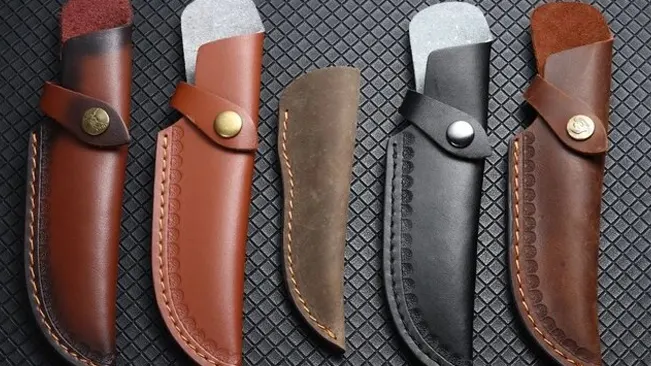
Historical Background
The history of knife sheaths parallels that of knives, stretching back to ancient times. Initially crafted from materials like animal hides, wood, and metals, sheaths signified the user’s social status and the knife’s purpose. Elaborate designs on sheaths often represented the owner’s background and beliefs, making them not only functional but also culturally significant.
With advancements in materials and craftsmanship, sheath designs evolved, incorporating features like durability, waterproofing, and convenience in carrying. Different cultures developed distinct styles, like the precision-crafted ‘Saya’ in Japan for samurai swords, and reinforced leather scabbards in medieval Europe for warfare.
Types of Knife Sheaths
Leather Sheaths
Leather sheaths are valued for their durability and classic aesthetic, popular among enthusiasts for their traditional craftsmanship. Made from materials like cowhide and exotic leathers, these sheaths are often hand-stitched and treated for moisture resistance. Their flexibility molds to the knife’s shape, providing a custom fit, and the natural appearance of leather improves with age, developing a patina cherished by collectors.
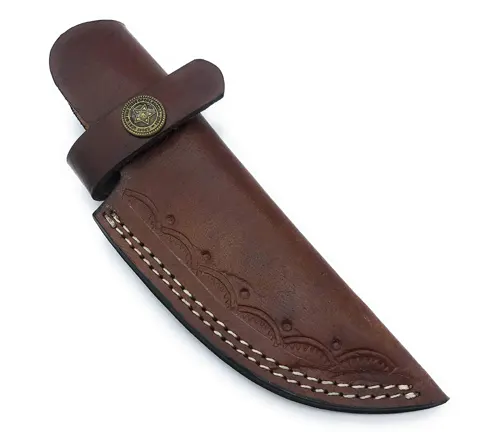
Plastic Sheaths
Plastic sheaths offer a modern, practical solution for knife storage. Typically made from materials like Kydex or ABS, these sheaths are lightweight, durable, and often more affordable than other types. Their waterproof and corrosion-resistant nature makes them ideal for knives used in wet or humid conditions. The rigidity of plastic sheaths ensures a secure fit, preventing accidental blade exposure, and their ease of cleaning makes them a popular choice for culinary and outdoor applications.
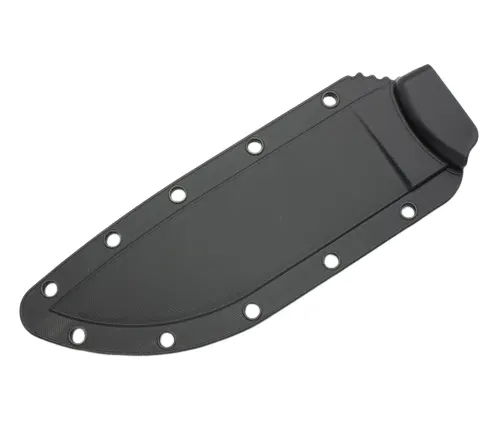
Metal Sheaths
Metal sheaths, made from materials like stainless steel or aluminum, offer maximum protection and strength, ideal for heavy-duty knives in outdoor or combat situations. Their reinforced structures prevent blade damage, and they often include safety features like locking mechanisms. Despite being heavier, their robust construction ensures unparalleled durability and blade security.
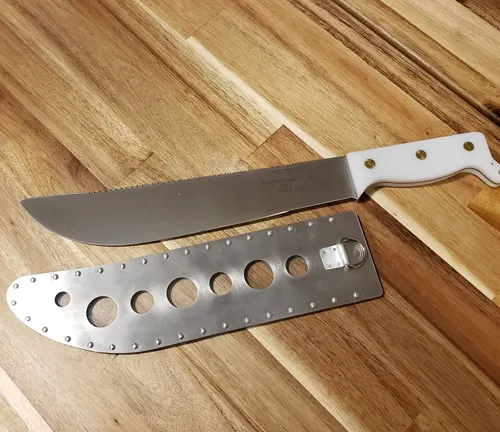
Custom Sheaths
Custom sheaths cater to those desiring a sheath as unique as their knife. Tailor-made to fit the exact dimensions and style of a specific knife, they offer a wide range of materials, designs, and features. Combining leather, wood, and metals, craftsmen can add unique touches like embossing or inlays, making these sheaths not just functional but also a reflection of the owner’s personality, popular among collectors and enthusiasts.
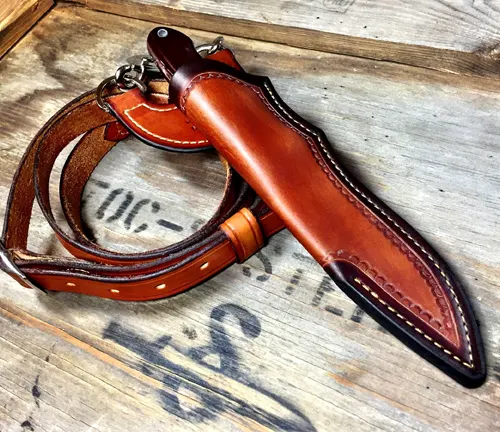
Design and Functionality
The design and functionality of a knife sheath are critical components that go hand in hand to provide safety, convenience, and longevity for both the knife and its user.

1. Fit and Security: The primary function of a knife sheath is to hold the knife securely. A well-designed sheath should fit the knife snugly, ensuring that the blade is not exposed accidentally, which could lead to injuries. The internal structure of the sheath should be such that it grips the knife firmly, preventing rattling or slipping out. This fit is especially important in activities involving movement, such as hiking or hunting, where a loose knife could pose a serious hazard.
2. Accessibility and Ease of Use: A sheath must balance secure storage with ease of access. The design should allow the user to draw and re-sheath the knife smoothly and quickly. This is particularly crucial in situations where quick access to the knife is necessary, such as in emergency scenarios or in a professional kitchen. Features like thumb ramps, quick-release buttons, or magnetic closures can enhance accessibility.
3. Protection of the Blade: The interior of the sheath plays a vital role in protecting the knife’s blade. Materials that cushion and protect the blade edge, such as soft fabrics or padded liners, can prevent dulling and scratches. For high-end or custom knives, this protection is essential to maintain the blade’s sharpness and overall condition.
4. Durability and Material Quality: The longevity of a sheath depends on the quality of materials used and the craftsmanship. Materials like high-grade leather, reinforced plastics, and robust metals are preferred for their durability. The sheath should withstand regular use, environmental factors like moisture and dirt, and, in some cases, impacts or abrasive conditions.
5. Additional Features: Modern knife sheaths may include additional features for enhanced functionality. These can include options for various carrying styles (like belt loops, clips, or MOLLE attachments for tactical use), waterproofing for use in wet conditions, and compartments for sharpening stones or other tools. Custom sheaths might also have personalized elements such as decorative patterns, monograms, or color choices.
6. Ergonomics and Comfort: The sheath’s design should also consider ergonomics and user comfort, particularly for knives carried for extended periods. The sheath should not impede movement or cause discomfort when worn on the body. The placement and angle of attachment points can significantly affect comfort and ease of access.
Maintenance and Care
Proper maintenance and care are vital for extending the life of a knife sheath and ensuring it remains effective in protecting your knife. Different materials require specific care methods:
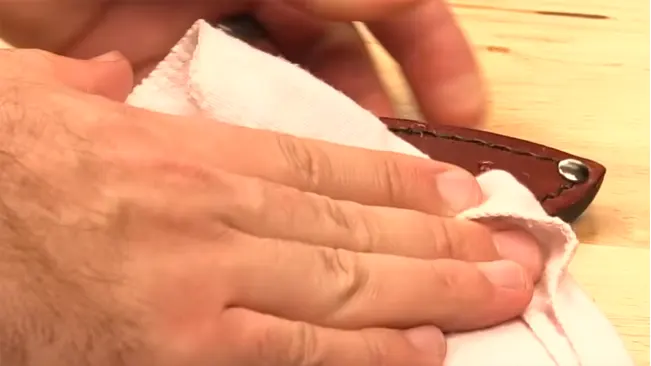
1. Leather Sheaths
- Conditioning: Leather sheaths should be regularly conditioned to prevent drying and cracking. Use a quality leather conditioner or oil to keep the leather supple.
- Cleaning: Gently clean any dirt or grime using a soft cloth and a mild soap solution. Avoid soaking the leather.
- Avoiding Moisture: Leather can absorb moisture, which can lead to mold growth and material breakdown. Store leather sheaths in a dry environment.
- Storage: When not in use, keep the sheath in a cool, dry place away from direct sunlight, which can fade and weaken the leather.
2. Plastic Sheaths
- Regular Cleaning: Plastic sheaths like those made from Kydex are low maintenance but should be cleaned regularly. Use a mild soap and water solution to remove dirt and debris.
- Rinse and Dry: After cleaning, rinse thoroughly and dry with a soft cloth to prevent water spots and buildup of residues.
- Inspection: Regularly check for cracks or warping, which can compromise the sheath’s ability to securely hold the knife.
3. Metal Sheaths
- Rust Prevention: For metal sheaths, it’s crucial to prevent rust. Apply a thin layer of oil periodically, especially if the sheath will be stored for a long time.
- Cleaning: Wipe down with a damp cloth to remove dirt and then dry thoroughly. For stubborn residues, use a mild cleaning agent.
- Avoid Dampness: Store metal sheaths in a dry environment to prevent moisture accumulation.
General Care Tips

- Regular Inspection: No matter the material, regularly inspect the sheath for signs of wear and tear, such as loose stitching or cracks.
- Proper Storage: Ensure that the knife is clean and dry before placing it in the sheath to avoid trapping moisture, which can lead to rust or mold.
- Avoid Overexposure to Elements: Extreme temperatures and environmental conditions can damage sheaths, so avoid leaving them in such conditions for extended periods.
By following these care and maintenance guidelines, you can significantly extend the life of your knife sheath and ensure it continues to function effectively and safely.
Choosing the Right Knife Sheath
The selection of an appropriate knife sheath is as important as choosing the knife itself, as the sheath plays a critical role in the knife’s safety, maintenance, and ease of use. Several factors need to be considered when selecting a sheath:

1. Type of Knife and Its Use
- Specific Fit: Ensure the sheath is designed for the specific type of knife you own. A sheath that fits the knife perfectly will offer the best protection and functionality.
- Intended Activity: Consider what activities you’ll be using the knife for. Outdoor activities like camping or hunting require durable and weather-resistant sheaths, whereas kitchen knives need sheaths that are easy to clean and allow for quick access.
2. Material of the Sheath
- Environment and Exposure: Choose a sheath material that suits your environment. Leather is great for traditional use but might not be ideal in very wet conditions. Plastic or synthetic sheaths are better for humid or salty environments.
- Durability Needs: If you anticipate heavy use, look for materials known for their durability and resistance to wear and tear.
3. Safety Features
- Locking Mechanism: For certain uses, especially where movement is involved, a sheath with a locking mechanism can prevent the knife from falling out.
- Blade Protection: The sheath should protect the blade’s edge and tip from damage, as well as protect the user from accidental cuts.
4. Comfort and Accessibility
- Ease of Access: A good sheath should allow you to draw and replace the knife easily and quickly.
- Carrying Options: Consider how you will carry the knife. Belt loops, clips, or MOLLE-compatible sheaths offer different carrying options depending on your needs.
5. Maintenance and Longevity
- Easy to Maintain: Choose a sheath that you can easily maintain. If you’re not willing to regularly condition leather, for instance, a synthetic sheath might be a better choice.
- Long-Term Use: Consider how the sheath will age and whether it can be repaired or needs to be replaced after extensive use.
6. Aesthetic Preferences
- Style: The sheath’s appearance might be important, especially for custom or collectible knives. Leather offers a classic look, while modern materials offer more design versatility.
7. Budget Considerations
- Cost vs. Quality: Balance your budget with the quality of the sheath. Investing in a good quality sheath can save money in the long run by protecting your knife more effectively.
Conclusion
Choosing the right knife sheath enhances the overall knife experience. It ensures safety, prolongs the life of the knife, and adds an element of personal style. Responsible knife ownership includes selecting and maintaining the appropriate sheath. Beyond functionality, the sheath reflects the user’s needs and preferences, whether for practical purposes or aesthetic value. In outdoor or professional settings, the right sheath can make a significant difference in accessibility and efficiency. Ultimately, a well-chosen knife sheath contributes not only to the longevity and performance of the knife but also to the enjoyment and confidence of its user.
10 FAQs about Knife Sheaths
- What is a knife sheath?
A knife sheath is a protective cover used to safely store and transport a knife, preventing damage to the blade and ensuring user safety. - Why is it important to use a knife sheath?
Using a sheath is crucial for safety, as it protects the user from accidental cuts and preserves the sharpness and condition of the blade. - What are the common materials used for making knife sheaths?
Knife sheaths are commonly made from leather, plastic (like Kydex), metal, and sometimes custom materials for specific needs or aesthetics. - How do I choose the right sheath for my knife?
Choose a sheath based on the knife’s size, the environment it will be used in, material preferences, and any additional features like waterproofing or attachment options. - Can I make a custom knife sheath?
Yes, custom knife sheaths can be made to fit specific knives, with personalized materials, designs, and features. - How do I maintain and care for my knife sheath?
Maintenance varies by material: leather sheaths need conditioning, plastic sheaths require regular cleaning, and metal sheaths might need occasional oiling to prevent rust. - Are there different types of sheaths for different kinds of knives?
Yes, there are different sheaths designed for various types of knives, such as hunting knives, chef’s knives, and tactical knives, each with specific design features. - Is it safe to carry a knife in a sheath in my pocket?
It depends on the size of the knife and the sheath’s design. Small pocket knives with secure sheaths are generally safe, but larger knives are better carried on a belt or in a bag. - Can a knife sheath be repaired if it’s damaged?
Yes, depending on the material and extent of the damage, sheaths can often be repaired or refurbished. - Are knife sheaths universal or specific to each knife?
While some sheaths are designed to fit a range of knife sizes, the best fit and functionality are often found in sheaths specifically designed for a particular knife model.

Kerith Simon
As an expert with over ten years of dedicated experience in knife defense, my professional journey is anchored in a profound commitment to the safety and empowerment of individuals through specialized education. My expertise is not only grounded in practical self-defense techniques but also extends to a scholarly understanding of knife functionality, which I have meticulously documented in my authoritative series, This work stands as a testament to my deep engagement with the subject, offering readers critical insights into the nuances of knife selection and usage across various contexts. My approach to teaching and content creation is informed by a rigorous methodology and a continuous pursuit of knowledge, ensuring that the strategies and insights I provide are both effective and scientifically sound. Through a combination of hands-on workshops, comprehensive seminars, and well-researched publications, I strive to elevate the standard of knife defense education, making it accessible and reliable for those seeking to enhance their security and proficiency in this essential skill.

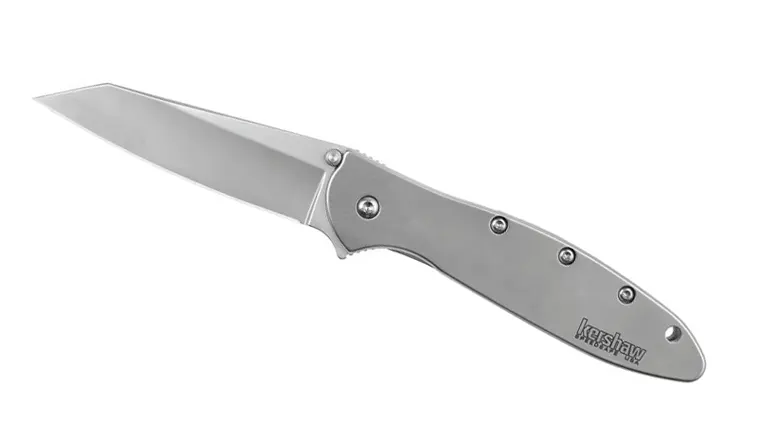
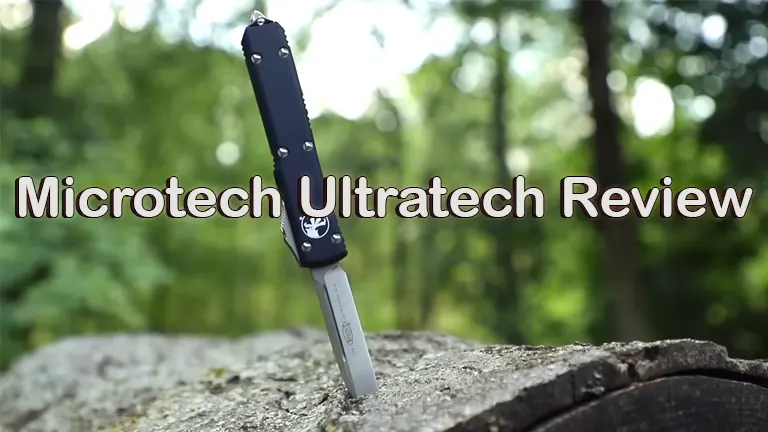
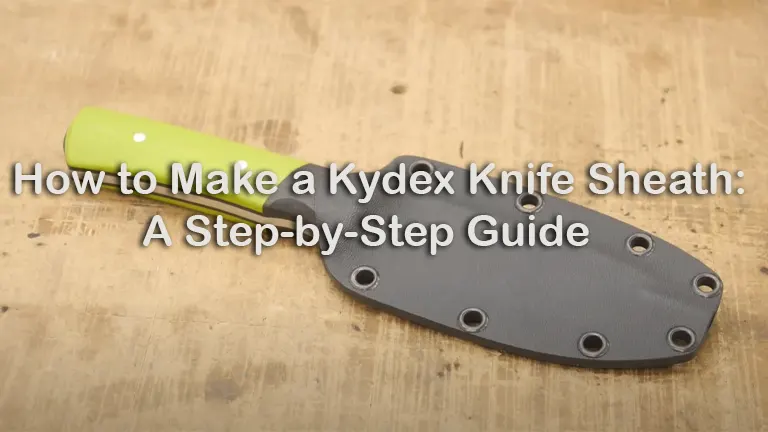
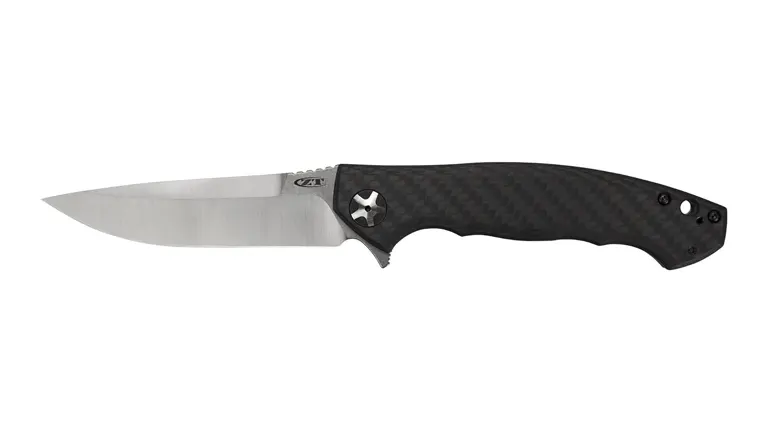
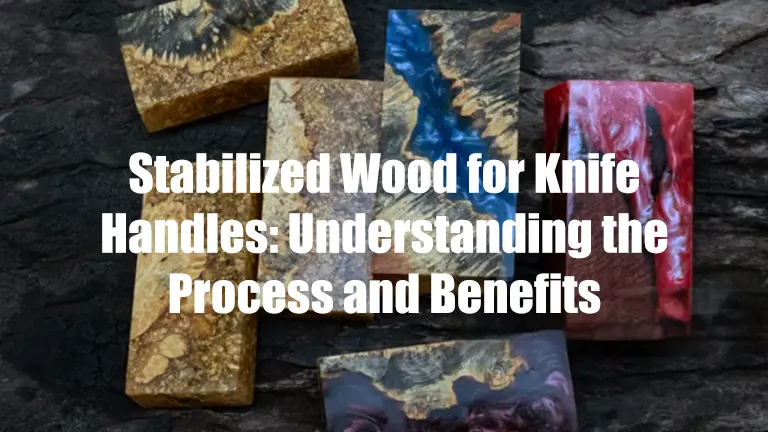

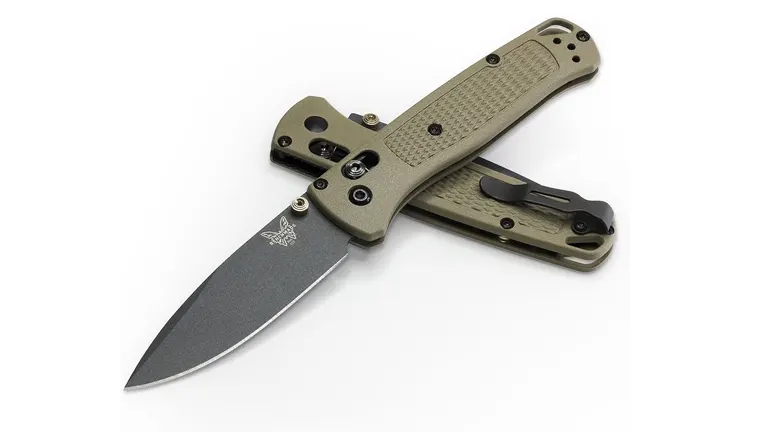
Leave your comment